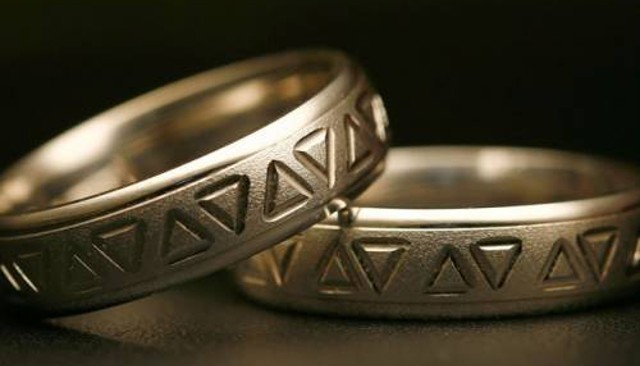This week the High Court will conduct hearings in the first ever case on marriage equality in Australia.
The Federal Government has challenged the ACT’s Marriage Equality Act on a range of grounds.
The constitutional arguments are pretty clear cut: the Feds say their Marriage Act is the final word on the issue while the ACT says it can legislate for same-sex marriages because the Feds don’t.
But not so much attention has been paid to the Federal Government’s broader arguments about marriage which are both bizarre and implicitly homophobic.
The Feds make the case that marriage is an “indivisible” and “binary” concept. There can only be one legal definition of marriage and hence only one law to define it. You are either married under such a law or you are not.
This will come as a surprise to the millions of Australians in de facto marriages.
They are living proof that “marriage” is neither binary nor indivisible.
They are also proof that states have a role in recognising marriage-like relationships because it was the states that led the way towards equal legal protection of de facto marriages.
Not surprisingly the Federal Government’s submissions are almost silent on the issue of de facto marriages.
The other string to the Feds’ bow is that it is “natural” for marriage law to be made at a national level, and that a state or territory law can only “mimic” marriage.
The Feds’ evidence for this proposition is that this is how the Romans legislated for marriage and it’s how marriage is legislated in Australia today.
This argument is extraordinary. How can a law made by one parliament be more “natural” than a law made by another?
It also ignores the fact that in the legal systems of most of our closest allies marriage law is made at a local level.
In Canada, provinces decide who can marry, and in the US it’s the states.
Even in a unitary nation like the UK marriage laws are local with the result that same-sex couples will soon be able to marry in England but not Scotland, in Wales but not Northern Ireland.
Indeed, the localism of marriage law stretches right back to classical times when, yes, the Romans, actually left such an important matter in the hands of the widely disparate peoples they conquered (at least up until the church insisted on a single imperial marriage code).
Closer to home, white Australians happily married under different colonial and then state marriage laws for almost two centuries without anyone thinking it “unnatural”.
Australia’s founding fathers understood the importance of local marriage laws.
When writing the Constitution they made the deliberate choice to share the power to make marriage laws between the states and the Commonwealth.
This allowed for a balance between the tradition of local marriage laws and the need for some consistency across the federation.
It allowed for the possibility that if marriage law lags behind changing social expectations at one level, reform can be taken up at another.
It made our federation what the best federations should always be, dynamic.
In 1961 Australians opted for a uniform national marriage law.
It was a time when national reform was almost a heroic project, but that time has long passed.
In Australia today most social reform emerges at the local level and the term “national consistency” is mostly a euphemism for crushing mediocrity. Rather than representing an aspiration to replicate the the best possible laws across the nation, the term usually just ensures that the “lowest common denominator” will reign supreme.
Fortunately, the decision to have a national marriage law did not mean the states gave up their power to also enact such laws.
The movement for marriage equality is reviving the tradition of local marriage laws.
If misrepresenting the history or marriage law was the Federal Government’s only misdemeanour it could be excused, but its case against the ACT does something far worse – it dog-whistles homophobic prejudice.
The Federal Government may use the word “binary” to describe the difference it sees between legally married partners and everyone else. But that word sounds suspiciously like how opponents of marriage equality describe the critical difference they think exists between different-sex and same-sex relationships.
Then there’s the Feds’ use of “natural” to describe a national marriage law (that just happens to be for heterosexuals only) and “mimic” to describe a state law (that’s for same-sex couples).
Again, the Feds’ may ostensibly be talking about laws, not relationships. But that doesn’t change the fact that these are exactly the words the religious right uses to perpetuate two of the worst stereotypes about same-sex relationships
: that they are unnatural couplings and that they don’t match up to the real deal of heterosexuality.
Finally, there’s the Federal Government’s observation that if states are allowed to legislate for same-sex marriage there’s nothing to stop them legislating for polygamous and incestuous marriage.
Here we see the rhetoric of homophobia, in the form of the infamous slippery slope, woven directly into the Federal Government’s case.
To get a sense of how outrageous this is, imagine the following scenario: The federal Marriage Act bans interracial marriages, a state passes a law allowing such marriages, and then the Federal Government challenges the state law in the High Court as not “pure” marriage because only a national marriage law can be “pure”.
There would rightly be an outcry about this barely concealed racism. It is a measure of the acceptability of homophobia that there isn’t an outcry now.
Inevitably, the focus of the High Court case will be on the constitutionality of the ACT’s attempt to bring greater equity to marriage law.
But that shouldn’t distract us from the Federal Government’s misuse of the case to send reassuring messages to those who detest same-sex relationships.
Publication: Online Opinion
Author: John Kloprogge
Date: 4 December 2013
To see original article, click here

